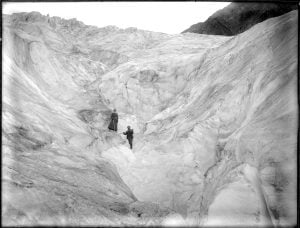
Places
The land holds memories
“All the mischiefs humans and the universe are capable of inflicting on an ecosystem have conspired to attack the prairies.”
- 6274 words
- 26 minutes
This article is over 5 years old and may contain outdated information.
History

By the time Sandford Fleming was born, in 1827, the first steam locomotive had been operating in his native Scotland for 10 years. When Fleming was two, George Stephenson’s steam locomotive Rocket set a land speed record of 47 km/hr (29 mph). A decade later, the longest railway in the world, at 259.9 kilometres, was completed in the state of Carolina. Railways were entering a period of unprecedented expansion and at the age of 14 Fleming found a perfect mentor in the person of John Sang, a well-known Scottish surveyor and railway engineer.
By the age of 17, Fleming was already surveying railway lines and engineering trestles. Yet it was North America, where a new order was being hammered together out of the wilderness, that called to him, and in 1845, carrying the pocket sextant given to him by Sang, he emigrated to Canada.
After a few years of scrambling, he eventually prospered, designing Canada’s first stamp, the Three Penny Beaver, helping to survey and plan the Intercolonial Railway, and then, as director of the Canadian Pacific Railway Company, supervising the completion of the first trans-Canadian railroad. You can see him at the centre of the now-famous photograph of the last spike being hammered on Nov. 7, 1885. Fleming is the tall figure with the top hat standing directly behind Donald Alexander Smith as Smith drives the spike.
Cropped out of the shot are the CPR telegraph poles. Telegraph lines were sprouting up beside train tracks like vines growing on trellises. Certainly a railway line was the most logical place to erect telegraph poles, but the symbiosis went much deeper than that. Vast solitudes of time and remoteness were foreshortened by the new velocities of machine and electricity. By 1861, North America was criss-crossed from coast to coast with more than 3,700 kilometres of telegraph wire. There was a fresh world being formed and a vanguard of thinkers, including Fleming, began to embrace a larger vision of this world, one that was temporally united into a global “now.”
It was from that lofty vista that Fleming turned his gaze to the details of railway schedules, and he didn’t like what he saw. In fact, the concept of Universal Standard Time arose directly from his frustration with North American railway timetables. Every town had its own local time based on solar noon. On the face of it, this might have seemed logical, but if it was noon in Montreal then it was 11:48 a.m. in Kingston and 11:35 a.m. in Toronto. These discrepancies added up to trains that were impossible to schedule. Fleming’s solution was brilliantly simple — divide the world into 24 time zones, one for every hour of the day. It was a generalization (each zone was about 500 miles wide in middle latitudes) that paradoxically made timetables more precise.
Fleming was a persuasive and persistent lobbyist for his time zones, travelling the world to pitch the idea to anyone who would listen, publishing a memoir, Terrestrial Time, and sending it to prominent scientists. In one passage he writes “Lines of telegraph and steam communications are girdling the earth, and all countries are being drawn into one neighborhood, but when men of all races, in all lands are thus brought face to face, what will they find? They will find a great many nations measuring the day by two sets of subdivisions, as if they had recently emerged from barbarism and had not yet learned to count higher than twelve.”
One of the recipients of Terrestrial Time was Cleveland Abbe, the prominent American meteorologist, who was advocating his own version of standard time. Fleming and Abbe joined forces and became a formidable team, enlisting to their cause a distinguished roster of international scientists and politicians, including the U.S. President Chester A. Arthur. The International Meridian Congress convened in Washington D.C., in October 1884, and Standard Time went into effect on Jan. 1, 1885. It was Sandford Fleming’s crowning achievement, one that capped years of effort and forever changed the way we experience time.
Are you passionate about Canadian geography?
You can support Canadian Geographic in 3 ways:

Places
“All the mischiefs humans and the universe are capable of inflicting on an ecosystem have conspired to attack the prairies.”

History
Mary Vaux’s groundbreaking 19th-century study of B.C.’s Illecillewaet Glacier created an invaluable record of the glacier’s recession

People & Culture
Uprooted repeatedly by development projects, the Oujé-Bougoumou Cree wandered boreal Quebec for 70 years before finding a permanent home. For some, the journey continues.

People & Culture
In the April issue of Canadian Geographic I wrote about Stratford, Ont.'s three decade struggle to repurpose the giant, neglected railway…